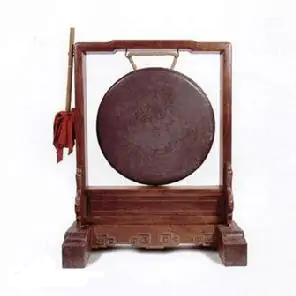The history of the gong
632 views · Organized by 青鸟 on 2022-03-14
"Old Tang Book Music Records" (Volume 29) said in the entry "Tongba": "Tongba, also known as copper plate, came from Xixu and Nanman." The copper plate mentioned in this record is about " The earliest record of the gong.
After the Qin and Han dynasties, gongs were once called "gold" and were used in wars. When the two armies fought, they were often commanded by gongs.
According to Tang Duyou's "Tongdian" record: in the early sixth century AD, the later Wei Dynasty began to have gongs, which were called "playing sand gongs" at that time.
With the development of opera art, gongs have played an important role in the accompaniment of Kunqu Opera in Ming and Qing Dynasties. The Chinese gong was spread to Europe from the west. In 1791, the French composer Gosec began to use the gong in his orchestral works and was the only Chinese instrument in the symphony orchestra.
Since the 20th century, gongs have been widely used in local opera, folk music, folk entertainment and festivals, and participated in the performance of various bands. In addition, it is also a tool for hawkers and monkey jugglers to solicit business along the street, replacing the selling with the unique tone of the gong, which is called "calling the head".
After the Qin and Han dynasties, gongs were once called "gold" and were used in wars. When the two armies fought, they were often commanded by gongs.
According to Tang Duyou's "Tongdian" record: in the early sixth century AD, the later Wei Dynasty began to have gongs, which were called "playing sand gongs" at that time.

With the development of opera art, gongs have played an important role in the accompaniment of Kunqu Opera in Ming and Qing Dynasties. The Chinese gong was spread to Europe from the west. In 1791, the French composer Gosec began to use the gong in his orchestral works and was the only Chinese instrument in the symphony orchestra.
Since the 20th century, gongs have been widely used in local opera, folk music, folk entertainment and festivals, and participated in the performance of various bands. In addition, it is also a tool for hawkers and monkey jugglers to solicit business along the street, replacing the selling with the unique tone of the gong, which is called "calling the head".
Involving musical instruments
The big gong (pinyin: dà luó) is a kind of gong, and it is called the big gong because of its large face. It is made of copper, about 30 centimeters in diameter, flat and round, with sides, with smaller side holes and tied with ropes. When playing, the left hand is holding the gong and the right hand is holding the mallet.
iao Gong (pinyin: xiǎo luó), named for its small size. Copper, round, about 22 cm in diameter, slightly raised in the center, not tied. When playing, use your left finger to hold the inner edge of the gong, and hold a thin wood chip in your right to strike the sound. Its sound is bright and crisp.
The gong is a traditional percussion instrument, also known as the gong because it is made of copper. Different places have different gongs. Wooden gongs, leather gongs, sieve gongs, earth gongs and gongs are all made of copper.
Guess you like
Organized by 桑白 on 2022-03-14
Taiyuan gongs and drums originated in Jinyuan and have a history of thousands of years. They were selected into the third batch of national intangible cultural heritage lists. Taiyuan gongs and drums are famous at home and abroad for their excellent cymbal skills.
read >>
Organized by 苏肆 on 2022-02-18
The big gong often cooperates with other percussion instruments, but it plays the most important role. Common gongs are divided into bass gongs, Korean gongs and welcoming gongs.
read >>
Hot news
- 01 The handsome guy in 1997 is so advanced in pulling erhu! Netizen: Come and "wash your ears"
- 02 The Simple Difference Between Guqin, Se, and Guzheng
- 03 Dulcimer exam and performance repertoire
- 04 The difference between the five-stringed lute and the four-stringed lute
- 05 The difference between cymbals and cymbals in ethnic musical instruments
 渝公网安备 50010702504639号
渝公网安备 50010702504639号